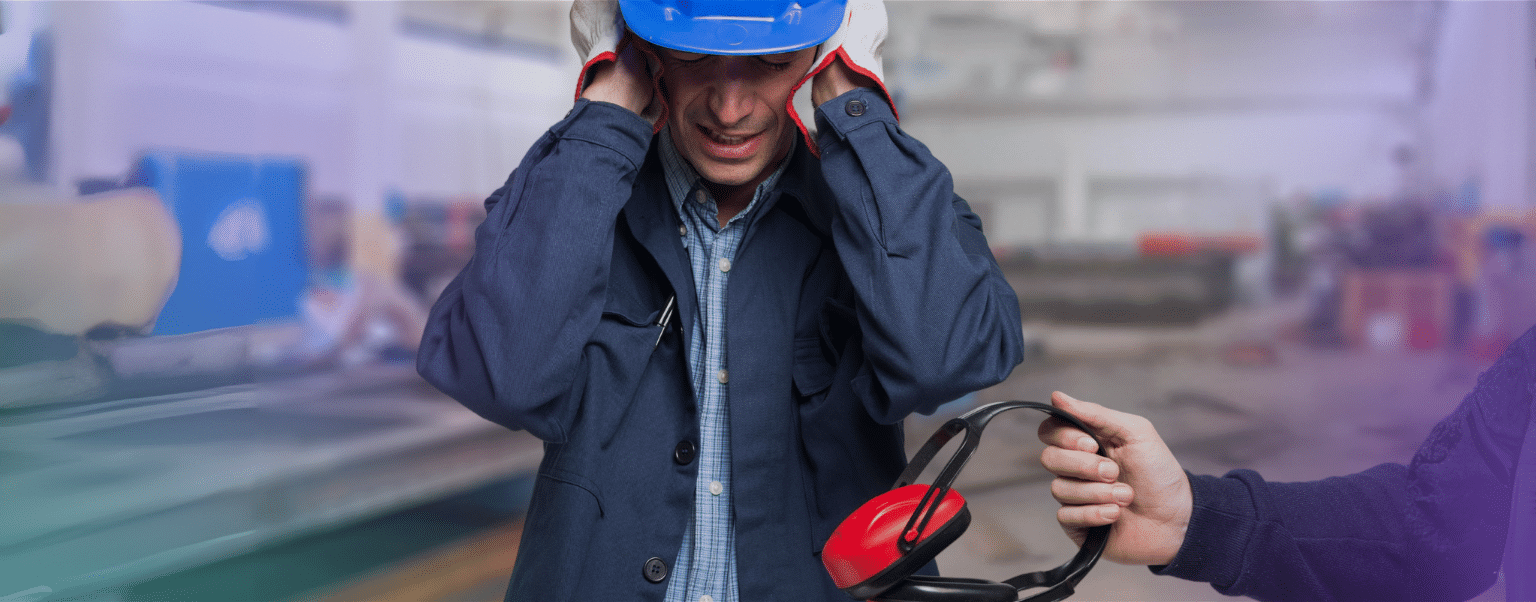Excessive noise at work accounts for around 170,000 people in the UK to suffer a form of occupational hearing loss.
Not only is excessive noise at work a concern for employee health, it could also affect their safety. It may interfere with communication and instruction between personnel that could result in the wrong action being carried out which in turn may result in an accident. There are also Implications when raising the alarm during an emergency situation.
A noisy work environment can prevail within different industry sectors with a few examples below:
- Construction,
- Factories (textile, pressing or stamping),
- Demolition,
- Engineering,
- Woodwork,
- Cannon or bottling processes,
- Children’s Play Centres.
As an employer, if you have a noise problem the warning signs will be your first indicator. Some of the commons signs are:
- Impact noises, e.g hammering, pneumatic impact tools,
- Employees having to raise their voice to communicate,
- Employees experiencing a ringing noise or struggling to hear a conversation away from the noisy environment,
- Employees not wearing the appropriate hearing protection.
Control of noise at work regulations 2005
The control of noise at work regulations 2005 places legal duties on the employer to prevent or reduce where reasonably practicable dangerous noise levels at work
If you are an employer, in order to demonstrate compliance with the above regulations you are required to:
- Make a suitable and sufficient assessment of the risk from noise at work, and the health and safety of those employees,
- Assess and identify the measures that need to be taken to protect the hearing of your employees through elimination or reduction of risks.
Dangerous Levels
The assessment will determine the personal exposure levels that employees are exposed to. At set limit values, certain action should be taken:
| Daily or weekly exposure | Peak sound pressure | |
| Lower Exposure Action Values (LAV) | 80 dB (A) | 135 dB |
| Upper Exposure Action Values (UAV) | 85 dB (A) | 137 dB |
| Levels of noise exposure which muct not be exceeded | 87 dB (A) | 140 dB |
Controls
After establishing that you have a noise problem, you should evaluate the risk and develop control measures or noise reduction techniques identified below:
- Reduce noise at source by implementing a quitter process,
- Introduce a “low noise” purchase policy when selecting new equipment,
- Ensure tools and machinery are regularly maintained as poor maintenance may cause unnecessary noise,
- Isolate the noise by implementing physical noise screens and highlighting ear protection zones,
- New employees to be provided with an initial hearing test and health surveillance should be carried out through their employment to monitor the hearing threshold levels following exposure,
- Job rotation as to limit the time spent in the noisy areas.
Hearing protection should be your last form of defence against hearing damage. If exposure to noise cannot be avoided, then you should make hearing protection available to employees when the LAV of 80 dB (A) is exceeded. If the UAV of 85 dB (A) is exceeded, then hearing protection must be made mandatory to employees exposed.
Any controls and remedial methods that you implement to protect your employees should be communicated effectively and training provided on the correct use and maintenance or the equipment.
Prevention is always better than cure.







